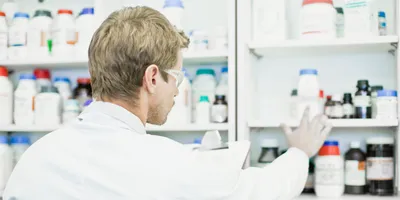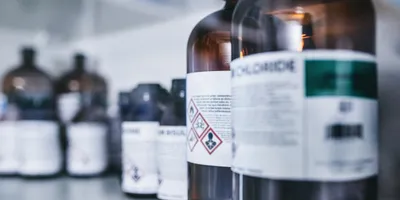In pharmaceutical quality control (QC), adherence to standardized testing methods and specifications is critical to ensuring product safety, efficacy, and consistency. This is where compendial standards such as the United States Pharmacopeia (USP) and European Pharmacopoeia (EP) come into play.
Regulatory authorities—including the FDA and EMA—expect QC labs to align their testing procedures with USP and EP standards as part of broader Good Manufacturing Practice (GMP) requirements. Understanding these pharmacopeias not only supports compliance but also strengthens lab credibility across international markets.
This article explores how USP and EP standards intersect with QC operations, regulatory inspections, and GMP training frameworks.
What Are USP and EP Standards?
USP and EP are compendial resources that define quality benchmarks for pharmaceutical substances, dosage forms, excipients, and laboratory test methods. Their content includes:
- Monographs with identity, purity, and strength specifications
- Validated analytical methods and system suitability requirements
- Guidance for microbial and chemical testing
For instance, a USP monograph for a generic tablet might define HPLC parameters, dissolution conditions, and impurity limits that manufacturers must meet to remain compliant in the U.S. market.
These standards are not optional. In the U.S., USP standards are enforceable under federal law, while EP standards serve as the legal foundation for product approval within the European Union.
Integrating USP and EP Into QC Laboratory Practices
To ensure alignment with USP and EP, labs should:
- Use compendial methods as default testing procedures
- Validate or verify methods when adapted for internal use
- Establish SOPs that mirror USP/EP requirements
This integration should be reinforced by training programs, especially for analysts and lab managers responsible for regulatory documentation. For example, if EP requires microbial enumeration using a specific method, staff must be trained on that procedure and its acceptance criteria.
Compendial Compliance During Regulatory Inspections
Inspectors from agencies like the FDA and EMA frequently cross-reference lab practices with USP and EP standards. During an inspection, you may be asked to:
- Justify the use of a non-compendial method
- Provide validation data for modified procedures
- Show audit trails and logbooks that prove adherence to monograph requirements
Failure to comply can result in 483 observations or even warning letters.
Managing Documentation and Change Control Around Compendial Updates
USP and EP standards are updated regularly. Labs must stay current by:
- Assigning a compendial liaison or SME to track revisions
- Updating SOPs, specifications, and training content accordingly
- Documenting all changes through formal change-control systems
These updates also necessitate retraining staff, a process closely linked to the documentation protocols outlined in Mastering Documentation and Record-Keeping for GMP Compliance: A Guide for Modern Pharma Labs.
Compendial Standards in Supplier Qualification and Method Transfers
When transferring analytical methods or sourcing materials from external suppliers, it’s essential to:
- Ensure vendors are compliant with USP/EP requirements
- Validate transferred methods against compendial expectations
- Audit suppliers for adherence to pharmacopeial standards
Integrating these evaluations strengthens quality oversight and aligns with practices discussed in Mastering Supplier Qualification and Management in GMP Environments: A Practical Guide for Laboratory Professionals.
Harmonizing Global Standards in Pharma QC
USP and EP standards are foundational to pharmaceutical quality control. They bridge national regulatory expectations, streamline global product approvals, and elevate the reliability of test results. By embedding these standards into your lab’s daily practices—and aligning them with GMP, training, and documentation frameworks—you ensure not just compliance but excellence.
For a global regulatory perspective, revisit FDA vs EMA: Differences in GMP Regulations and understand how pharmacopeial harmonization plays a role in multi-region compliance.
Frequently Asked Questions (FAQs)
What is the difference between USP and EP standards?
USP (United States Pharmacopeia) standards apply primarily to pharmaceutical products in the United States, while EP (European Pharmacopoeia) standards govern products in the European Union. Both establish criteria for quality, purity, and testing methods, but they may differ in specific methodologies and limits.
Lab Safety Management Certificate
The Lab Safety Management certificate is more than training—it’s a professional advantage.
Gain critical skills and IACET-approved CEUs that make a measurable difference.
Are USP and EP standards legally enforceable?
Yes. USP standards are enforceable by the FDA under U.S. federal law, and EP standards are legally binding in the EU under the European Medicines Agency (EMA). Compliance with these standards is essential for market approval and regulatory inspections.
How often are USP and EP standards updated?
USP and EP standards are updated regularly to reflect advances in science, technology, and regulatory expectations. Laboratories must monitor updates and implement changes via robust change control systems to maintain compliance.
Why is compendial compliance important during regulatory inspections?
Regulatory bodies such as the FDA and EMA evaluate QC lab practices based on compendial compliance. Failure to meet USP or EP requirements can result in regulatory citations, including Form 483 observations or warning letters.











